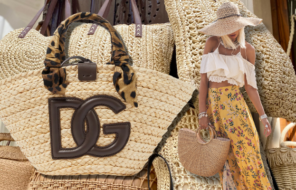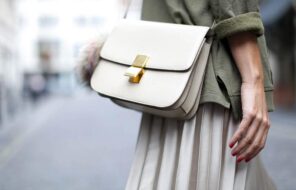Bellybutton piercings can be a great way to express yourself. If you’re new to piercings, there are some things you should know. For example, you’ll probably see a little blood and experience a bit of pain during the piercing. But if you keep up with cleaning your skin and select a high-quality piercing studio or salon, you’ll minimize your chances of potential complications.
Bellybutton piercings can be a fun way to spoil yourself or express your unique sense of fashion. Here’s a look at what you should know before getting your bellybutton pierced.
A look at bellybutton piercings
As the name suggests, a bellybutton piercing is just that: Skin near the bellybutton is pierced with a needle, and a ring or stud is inserted. Be sure to stay away from piercing guns — opt for needles or hand-pressured devices instead so the piercer has full control over the process. You can add many types of jewelry or adornments to your piercing, but it all starts with the initial piercing.
If you’re considering a bellybutton piercing, be sure to choose a reputable piercer, like a licensed nurse. You may want to ask them how long they’ve been piercing for and how much experience they have with bellybutton piercings in particular.
No matter who you choose, ensure they’re following best practices for sanitation. Never reuse needles or share them with another person, as this can spread disease. A reputable piercer will also advise you to use quality metals for your first piece of jewelry. A 14-karat gold stud is a great starting point since it’s less likely to elicit an allergic reaction.
What to expect from your piercing appointment
Once you’ve selected a piercer, it helps to know what you can expect from the appointment itself. First, you’ll work with the piercer to pick out a piece of jewelry. Depending on the salon or studio, you may pay upfront or after you’re done.
The studio or salon will likely start off by marking the piercing location with a marker. Then, he or she will use a new sterile needle to pierce the skin by your bellybutton. Yes, this will likely cause a bit of pain. However, each person has a different pain tolerance, so it may feel more like a pinch for some. You’ll probably also see a drop or two of blood, so if you’re a little squeamish, it can be helpful to look away or talk to a friend for distraction. Finally, the piercer will insert your jewelry into the new hole — and voilà! You’re studded.
All in all, the actual act of piercing only takes a few seconds. Your total appointment time will probably be somewhere in the neighborhood of 15 minutes, though the exact timing will differ depending on your piercer. They may also take a few extra minutes to talk you through the process beforehand if you mention you’re feeling a bit nervous.
Cost of a bellybutton piercing
Each piercing studio or salon will have its own pricing for bellybutton piercings. You can expect it to cost between $50 and $200. The more expensive it is, the more experience and professionalism the piercer is likely to have.
The jewelry may be included, or it may cost extra, depending on the salon or studio’s pricing model. It’s helpful to contact a piercer ahead of time, so you know exactly what’s included in the total cost of your piercing.
Caring for your piercing
That initial piercing appointment is just the beginning. It’s important to care for your new piercing properly. You may be surprised to learn that it could take up to one year for it to heal.
To prevent infections, wash your hands whenever you touch your bellybutton piercing. Plan to clean it once or twice a day using the solution sold at the piercing salon or studio. A DIY option is to mix up your own solution using ⅛ teaspoon of salt and 1 cup of distilled water. Use a clean piece of cloth to cleanse your piercing gently, then wipe it dry with a paper towel.
You might see some fluid or dried crust at your bellybutton, which is part of the healing process. Although tempting, be sure not to remove it because it can cause complications or bleeding. Let it progress naturally until it falls off on its own.
You’ll want to avoid applying lotion or anything else to your piercing unless a doctor or your piercer instructs differently. It’ll be more comfortable to avoid tight clothes, too, to reduce the chances of your piercing snagging on your clothes (ouch!). Be sure to stay out of the pool (or hot tub or lake) because germs could get into your piercing and cause an infection.
Risks of bellybutton piercings
Even if you’re doing everything right in terms of aftercare, there’s still a chance of infection. Keep an eye out for red or swollen skin, pain, pus, or even high temperature. These could all signal an infection, and you may need to call your doctor.
Other risks of bellybutton piercings include:
- Tearing if your piercing gets caught
- Allergic reaction to the jewelry
- Scar tissue formation
- Rejection of the piercing
If your body seems to reject it, that typically means the piercer didn’t performing quality work, or the jewelry might be too small or of lesser quality — another reason why it’s crucial to do your homework on piercers first.
If you have diabetes, hemophilia, autoimmune conditions, heart or skin conditions, or if you’re pregnant or carrying excess weight, speak with a medical professional before getting a piercing.
The bottom line on bellybutton piercings
Bellybutton piercings can play into your personality and individual style. If you’re considering one, it’s important to research professional piercers to find a quality and safe option. Never neglect your piercing, as it needs to be cleaned regularly. The better you take care of it, the more likely it’ll heal without complications. Putting in the time to help heal your piercing means you can enjoy your bellybutton piercing for years to come.





